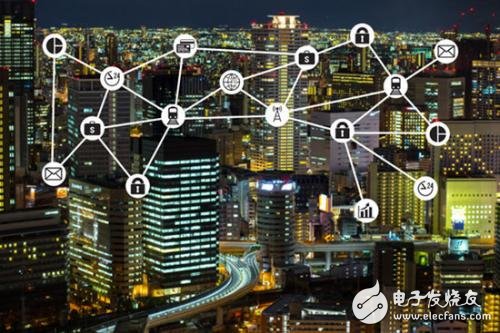2018 will be the first year of the Internet of Things. From the beginning to the maturity, the mature Internet of Things will go through three phases: the first phase: the use of IoT data to streamline the process; the second phase: the creation of new sources of income; The third stage: using data generation strategies to change the business.
The Internet of Things can evolve from streamlined processes to the final transformation of the entire business.
Companies are now placing a strong investment in the Internet of Things, and Gartner predicts that in 2017, companies will spend nearly $964 billion on IoT-related projects. A recent global survey of global IT and business decision makers shows that 81% of companies said they have started their IoT journey or plan to do it in the coming year.
However, many people think they are behind, more than half of the respondents said they are still lacking in the ability to fully control the Internet of Things, and 43% said it would have a negative impact on customers.
Although many companies have finally started the IoT journey after careful thinking and exploration, they still have a long way to go before they can improve efficiency, create competitive advantage and increase profits.
In fact, the first investment in the Internet of Things is just the beginning of this journey. According to our experience, companies need to go through three stages to ensure real benefits from the Internet of Things.

In the first phase of the maturity of the Internet of Things, companies often want immediate benefits. Basically, data collected from networked devices can be used to directly improve the internal operations of a single business team.
For example, fleet operators install sensors in vehicles to detect mechanical failures. This networked device can monitor problems and take action before failures occur.
This will quickly generate a lot of benefits, because the vehicle will not break down again, the end customer will not be dissatisfied due to delay in arrival, and the fleet operates
Avoid avoiding the cost of solving problems after an accident. This has a direct positive impact on cost and customer satisfaction.
Phase 2: Creating new sources of incomeAccording to a recent survey by McKinsey, 92% of companies hope that the Internet of Things will have a positive impact on the company in the next three years by improving operations or developing products with IoT capabilities. Therefore, the focus here is on creating a monetized investment framework.
When looking for these benefits, it's important to remember that customers only pay for solutions that solve their problems or needs. Manufacturing a company's assets or products is just a tool to achieve this.
Therefore, the better the solution, the more customers are willing to pay a higher fee for this, which is why the Internet of Things can be a catalyst for further business development: companies can use existing products or technology platforms to create many new services. Achieve this goal to better realize asset monetization.
For example, we work with a large customer in the industrial sector to connect the central control department with the electromechanical equipment department to provide better end-to-end service for the escalator, so that the system can better predictive maintenance and effectively reduce The number of field visits required.
The third stage: using data generation strategies to change the businessThe third phase of the maturing of the Internet of Things has led to a broader business model shift as it allows companies to transform from a pure product sales organization to a richer solution provider.
Respondents based on the IoT survey said that the biggest benefits of the Internet of Things include improving organizational efficiency (66%) and improving data applications to generate a guiding strategy (53%).
The same is true of the McKinsey survey mentioned above: 62% of companies believe that the impact of the Internet of Things will be very large, even revolutionary.
So what does this look like in practice? An example we think of is that automakers can use the data-generating insurance scheme generated by telematics equipment, which is more personalized than the insurance company's traditional premium scheme, which is mainly achieved by analyzing data such as driving style and customers usually driving. Area and so on.
This approach will help companies become long-term stable service providers, able to adapt products based on market changes, customer needs and new opportunities.
The platform needed for successThe key to solving this is to have the right IoT platform to fully analyze the data generated by the sensor-mounted assets. Fully interpreting “dark data†and “dark assets†is the core value proposition of any IoT platform, which can help companies generate actionable strategies from their systems and assets.
Only in this way can data be fully utilized in R&D, supply chain, and remote operations, benefiting multiple businesses, ultimately achieving a virtuous cycle of productivity growth, increasing customer satisfaction, and increasing the company's overall revenue.
Air conditioning appliances, automatic control system is commonly used in the device, generally used to switch on and off the circuit, is an important component of automatic control and remote control circuit.
Air Conditioning Relay,Air Conditioning Time Delay Relay,Household Fan Air Conditioning Relay,Energy Efficiency Air Conditioning Relay
Ningbo Xingchuangzhi Electric Appliance Co.,Ltd. , https://www.xingchuangzhi.com